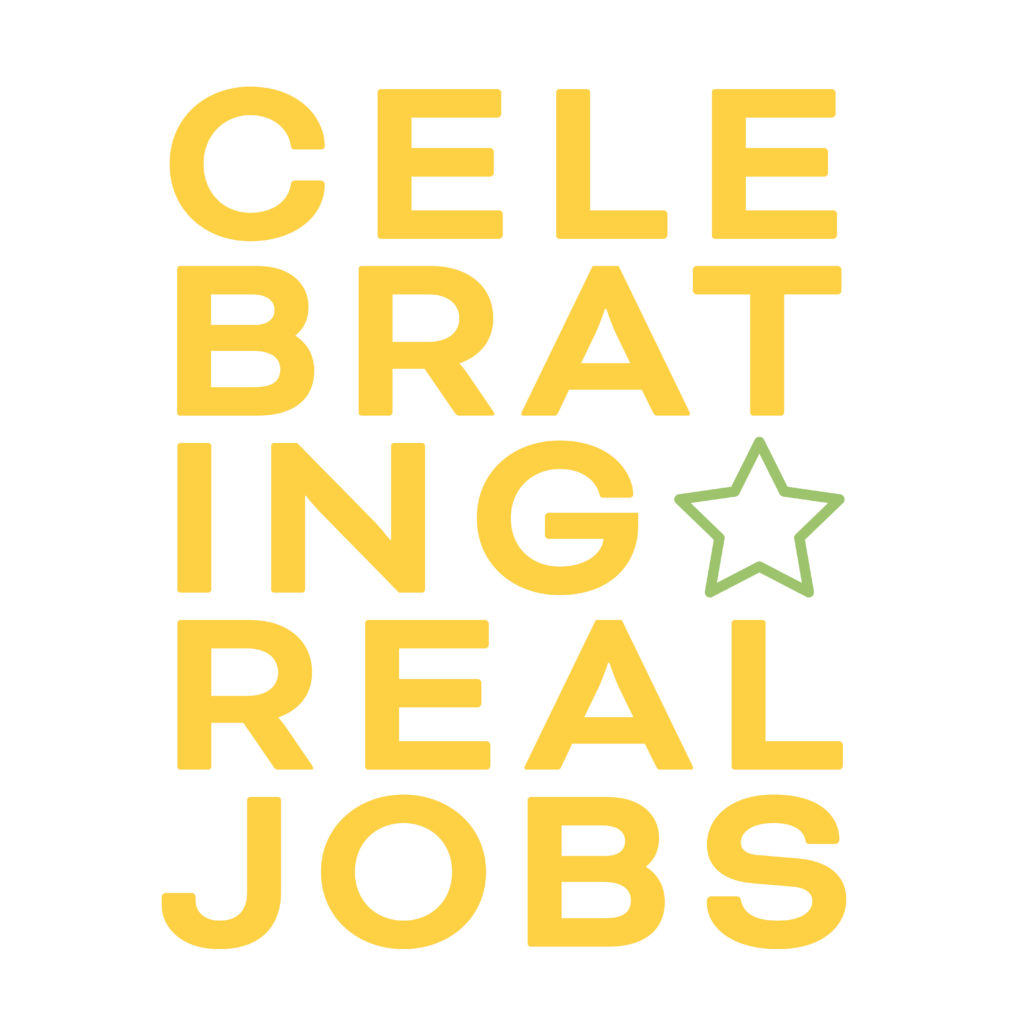Background
The department of of Graphic Communication and Typography required two students to help with the organisation and delivery of the summer exhibition in the department with the theme of ‘celebrating five decades of Real Jobs’. Real Jobs are a client facing scheme which students can choose to take on in completion of their BA degree. The aim of the scheme is to engage new clients and give the students a real experience working in the ‘real world’ to see how a design job is processed and criticised, which successfully prepares them for working with real clients after University. We decided to take on this particular Real Job as we believe our understanding of student behaviours and interests in and out of class will enable us to draw in as many students as possible. We know that students are curious about interactive events occurring on campus, and given the event is celebrating student work it is imperative they are a part of the outcome.
The Brief
The client for this Real Job was James Lloyd, also the organiser of the scheme which meant communication was key in order to ensure the exhibition would be successful. We were also lucky to be supervised by the head of department – Eric Kindel who guided us throughout the long process or producing an exhibition.
The purpose of the brief was to create and engage both students and clients in an exhibition celebrating five decades of real jobs. Other than the exhibition, deliverables needed to be designed and distributed in the lead up to the event. These deliverables were equally as important as the final exhibition as their goal were to raise awareness of the event and gain new clients interested in the scheme. ‘Clients’ can mean anyone from local businesses, large organisations, charities, etc. Fundamentally though, their common thread will be their future need for design tasks to be completed, and their desire to give such opportunities to students – a desire that we are being tasked in awakening.
Given that the scheme has been running for a long duration of time, the final display needed to be carefully categorised to present each theme. These themes were established later in the design process and organisation of the exhibition. Overall the final exhibition and deliverables needed to successfully engage both student and client relations with the department as this will allow the scheme to keep running in future years to come. The exhibition opening night should also represent a celebration as the scheme has been successfully running for over five decades.
Research
In order to understand the Real Job scheme in more detail we immediately arranged a meeting with head of department and supervisor – Eric Kindle. This enabled us understand the topic to then take a more emotional approach.
It is important to note that the initial approach we took to organise the exhibition did not produce the results we had intended and forced us to reconsider our approach. We had the idea to create an opening night in a location other than the department however it soon became clear that this idea was not feasible and fitting to the genre of work we would have been displaying. We produced initial concepts for poster art that would be used to promote this event. We mostly looked at styles of work that inspired us and attempted to link them to the subject of design.
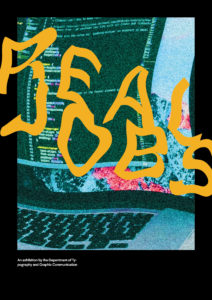
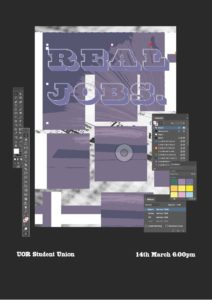
During this time we also applied for funding from the Arts Committee, however shortly following from this the funding was rejected. Disappointed but not disheartened we continued with the planning and took a new approach with organising the exhibition. The exhibition was to be hosted and displayed in the department of Graphic Communication and Typography. We felt this would also be nostalgic for clients or previous students from the department who visited.
The main bulk of research came from finding and looking through archives within the department containing series of Real Jobs which dated back as far as 5 decades ago. We found it extremely enlightening to see the variety and content of work that has taken place in the department over this period of time. We are also incredibly grateful for the help of several lecturers here in the department who assisted us in looking through the large volume of work. This part of the research was incredibly time consuming however worth it when we had a concise pile of artefacts we felt could be suitable for the final exhibition.
Concept
The final concept and themes for the exhibition came to us once we had thoroughly looked through the archives and current student work. After sketching several plans, we agreed that the overarching theme of the exhibition would be “time” or things evolving. This can then be broken down into different focusses, allowing us to explore a broad range of work. These categories are collaboration, client relationships, community impact and changing technology, all of which fit into the main theme, as well as interconnect with one another.
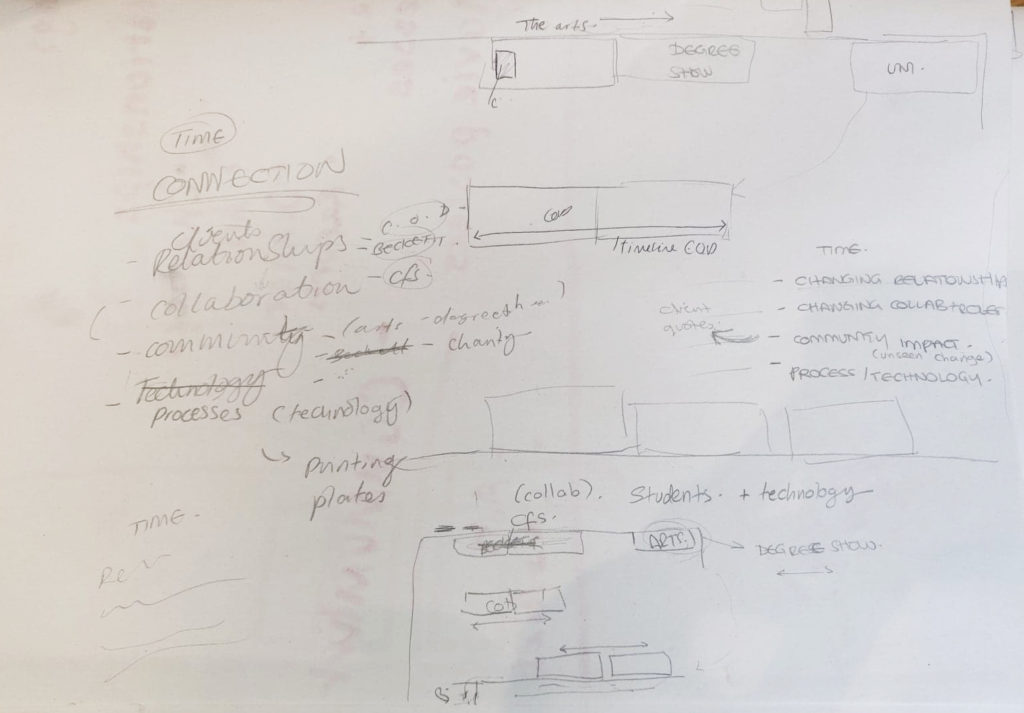
Design Process
The first deliverable that we produced was the exhibition invitation. We were informed of the Degree Show invitations being sent through the post, and decided to collaborate with the degree show team to insert our invitation into their own to be sent together. We had a tight deadline and so wanted to make a design that had its own identity but that could be flexible according to changes in the style or theme of the exhibition. Initially we agreed on a colour scheme and set of typefaces that would be positive and celebratory, without being crude. The concept we started with was 50 years of real jobs and the title had a subtle 50 behind it, as pictured.
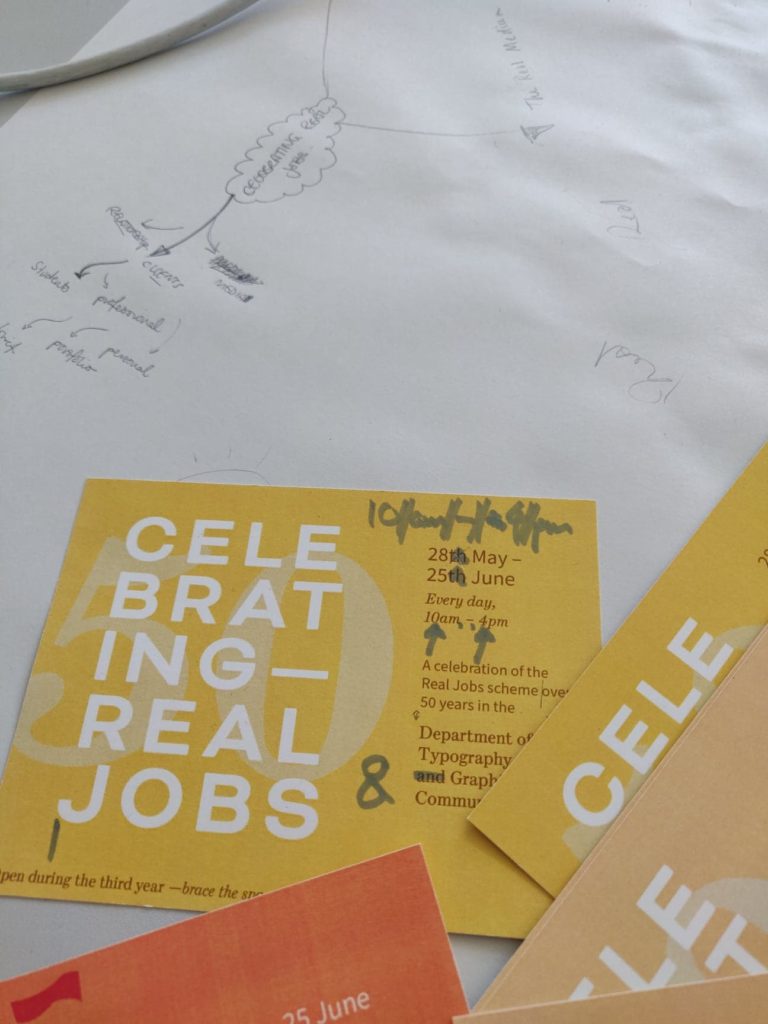
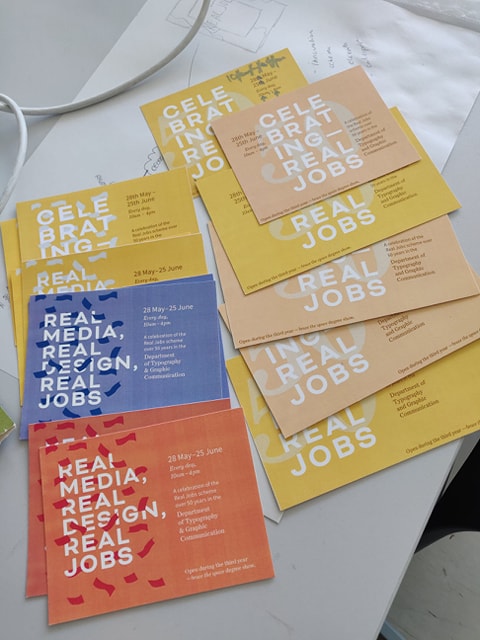
We were later told that this would be misleading, as the scheme has not been running for exactly 50 years. With the tight deadline looming, we consulted our supervisor and client and decided to use another concept that tapped into the nostalgia; this was the green star used in older real jobs meetings.
Another aspect of the design process – and arguably the largest – was arranging and preparing exhibition material for display. After grouping the work for display, we wrote out appropriate captions that would summarise the key information of a project, as well as indicate how it relates to the theme. We unified the textual hierarchy and the paper stock for a professional finish. Additionally, we had a new experience of mounting and displaying for an exhibition space. Because we were dealing with a range of work such as books, posters and more 3-dimensional pieces, we had to explore a range of ways to raise, stick and hang certain things. This came with many challenges, as there were some resources we had not previously come into contact with such as the clear tape used to hold down open books. As well as this, a lot of time was spent discussing how to arrange certain items so that the grouping, the pace, and the viewing direction were all clear, and so that items were viewed in their optimal position for the appropriate level of detail.
The Final Deliverables
The below images are completed cases and walls for the first category of the exhibition – changing relationships.
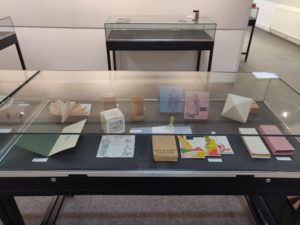
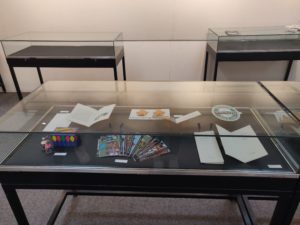
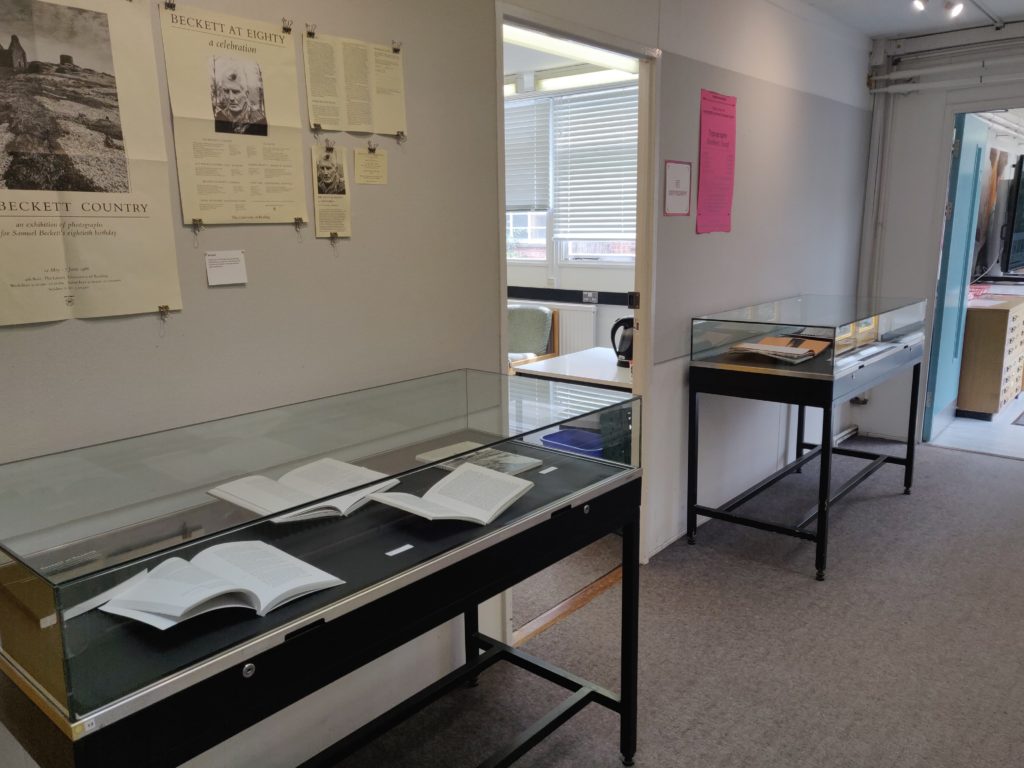
Communication with the Clients
As our client and supervisor for this job are both important roles within the department it was imperative to keep communication with them at all times. Being constantly in the department during working hours, as well as available through email and phone, both our supervisor and client were easy to reach most of the time, if available.
Overall
It was agreed that we both found the Real Job extremely challenging but overall rewarding. We took on the job with the thought we would have more independence with organising and hosting a final exhibition opening however it soon became clear the style of work and the clients we were dealing with insisted on a consistent and professional style. Displaying and hosting the final opening within the department of Graphic Communication and Typography enabled us to do this with ease. It was incredibly eye opening to have access to all of the work from the scheme over the past five decades and we like to feel like delivered the final exhibition and deliverables at a high standard with pride in the community and degree we are grateful to be a part of.
As the exhibition opening is set from 13 June 2019, displaying exhibition work is still in progress. This will be completed by this deadline and all print materials will be completed by this time. This also means that we are unable to measure success until after the exhibition is taken down. However we have agreed we are more than happy to assist the department in final display of any work left and also to bring down any material in preparation for the following exhibition later in the summer.
Finally we would like to state how incredibly grateful we are to have been given the chance to contribute and help organise in the run up to the event. We have from this learnt many new skills including event planning and organising an exhibition which will be useful later in life with our chosen career paths following graduating from the department.
The next steps
This real job is a work in progress and has been partially completed to represent that range of deliverables and captions that will be displayed. The current display has been arranged based on a complete plan of the exhibition space that we have been following, based on the themes mentioned earlier in this report.
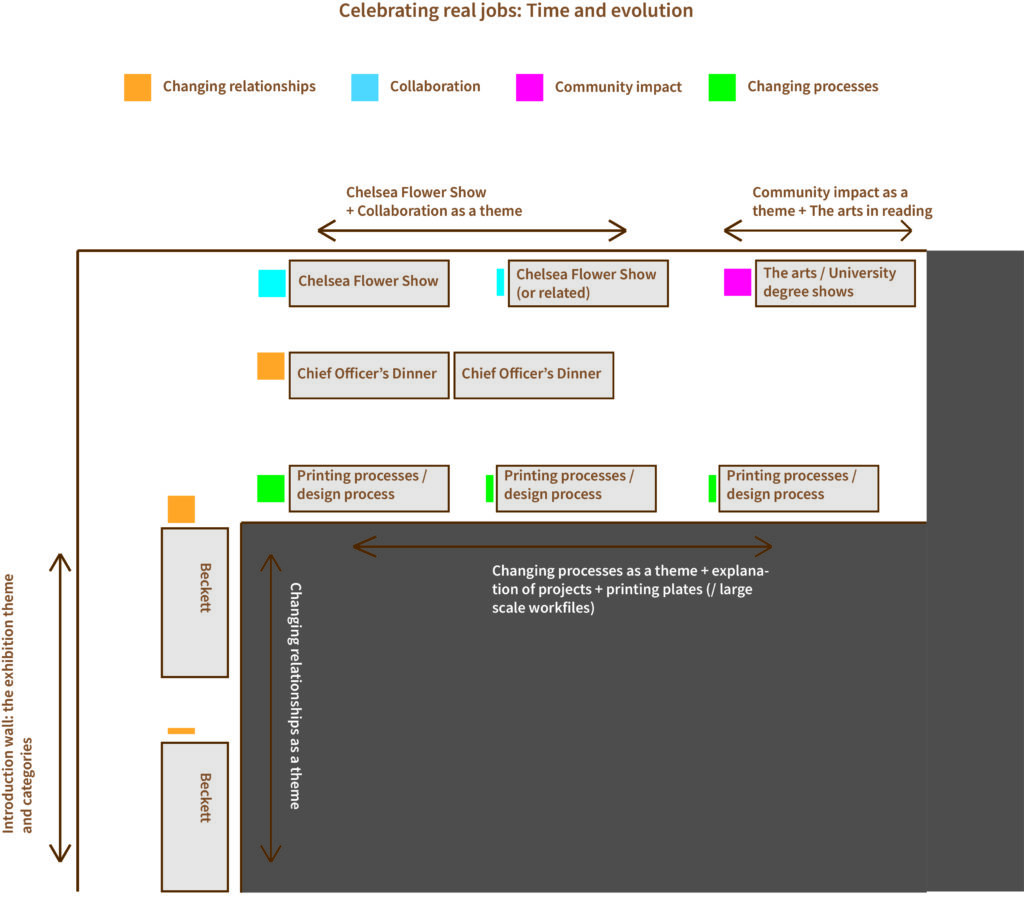
Abi Hammond and Racheal Paris

